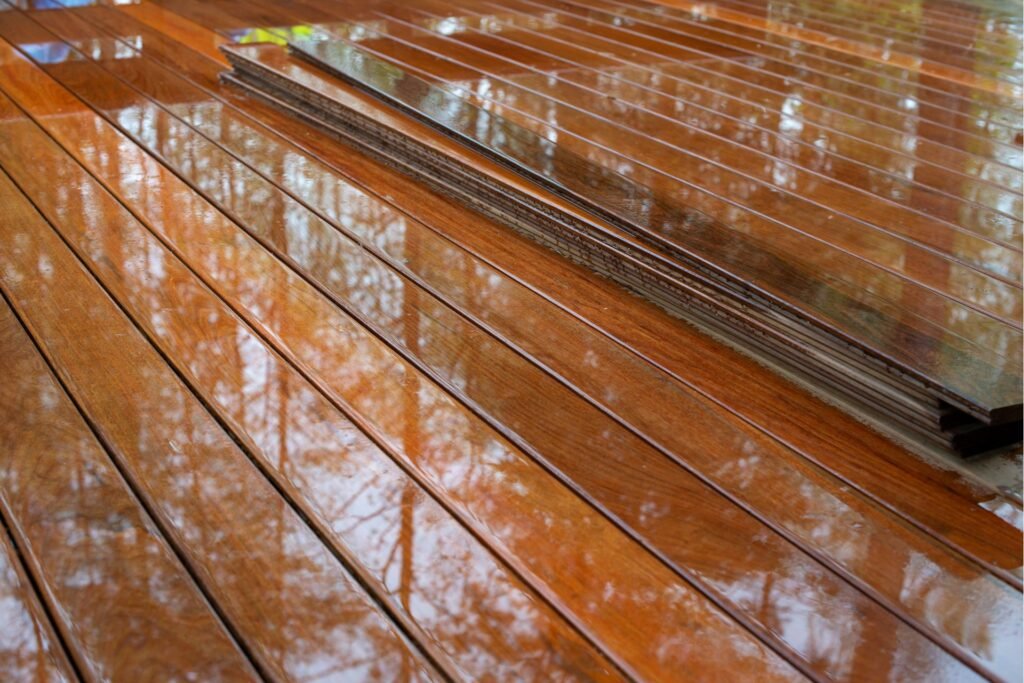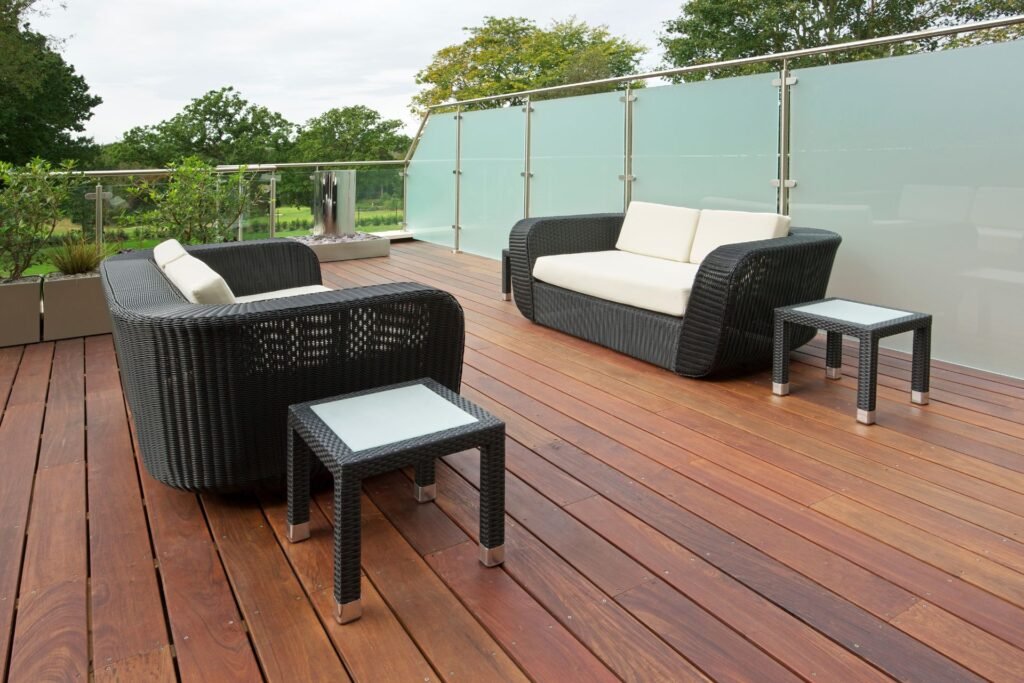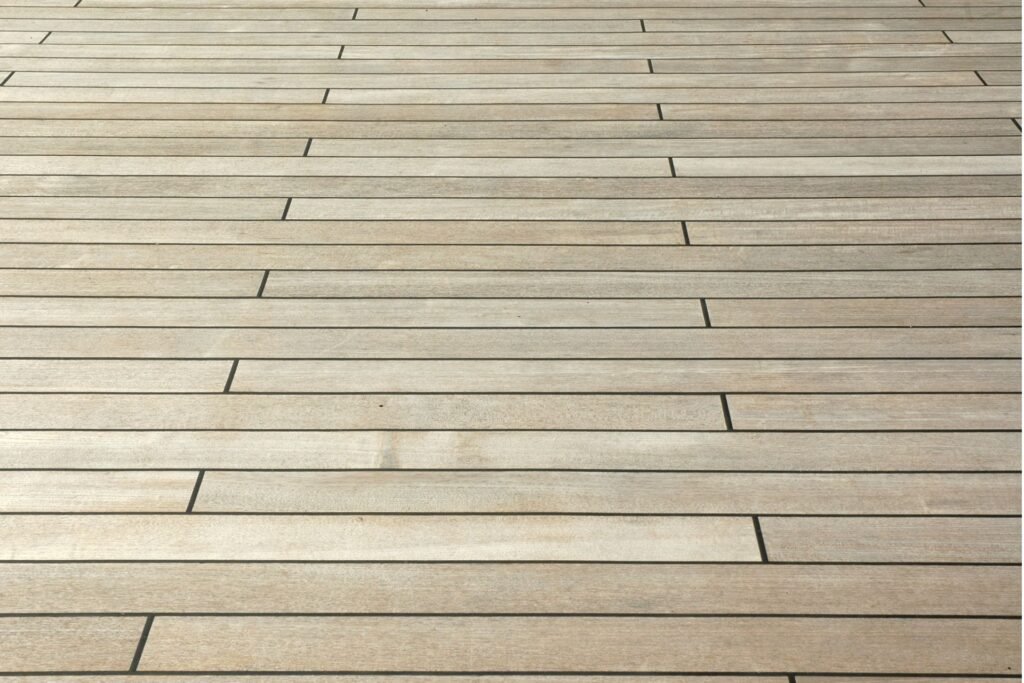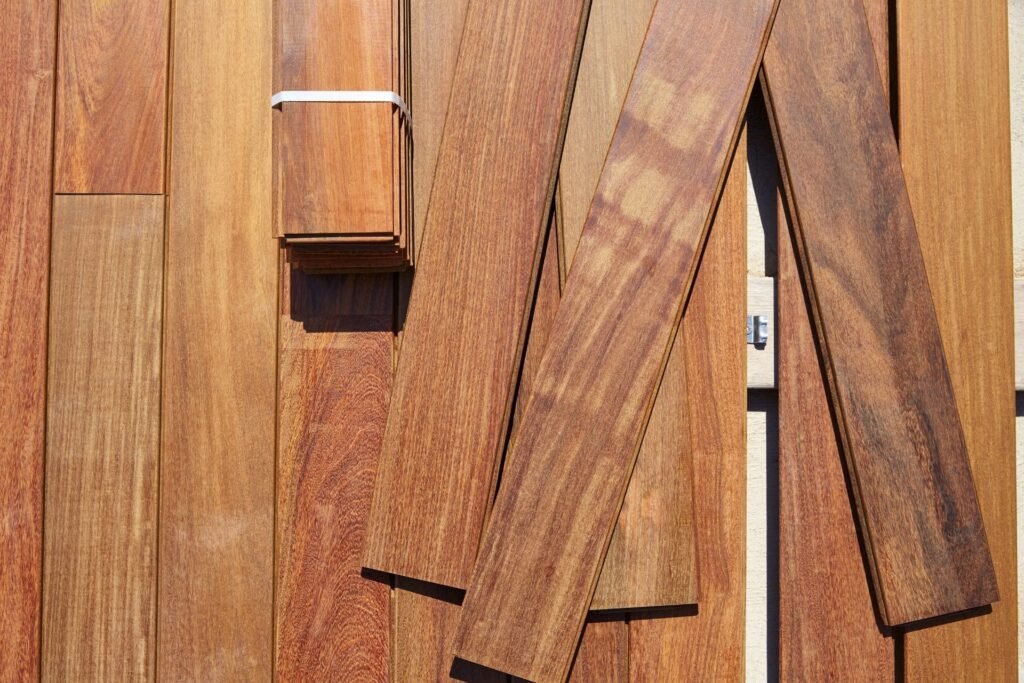Ultimate Guide To Cost Of Kwila Decking Australia
Welcome to your ultimate guide on the cost of Kwila decking in Australia. In the vast world of outdoor decking, Kwila stands out for its rich color, durability, and elegance, making it a favored choice among homeowners and builders alike. As you embark on your journey to transform your outdoor space, understanding the financial investment required is crucial. This guide aims to navigate you through the various aspects influencing Kwila decking’s cost, ensuring you make an informed decision that aligns with your budget and aesthetic desires. From the environmental considerations of choosing Kwila wood to the factors affecting its market price in Australia, we’ll cover everything you need to know. Whether you’re planning a DIY project or considering professional installation, our comprehensive exploration will provide valuable insights into making the most of your investment. So, let’s dive in and uncover the beauty and value of Kwila decking together.
The cost of Kwila decking in Australia typically ranges between $250 to $350 per square meter, including materials and installation. Prices can vary based on factors such as the size of the deck, the thickness of the boards, and geographic location. Kwila, known for its durability and rich color, is a popular choice for outdoor decking, offering a long-lasting and beautiful addition to any home. When considering Kwila decking, it’s important to factor in the wood’s sustainability and the maintenance required to keep its appearance over time.
Understanding Kwila Wood
When it comes to selecting the right wood for your next project or piece of furniture, understanding the materials you’re working with is crucial. Kwila wood, also known as Merbau, is a popular choice for a variety of reasons, from its durability to its environmental impact. In this comprehensive guide, we will delve into everything you need to know about Kwila wood, ensuring you make an informed decision for your next purchase.
Brief History and Origin of Kwila Wood
Kwila wood hails from the dense forests of Southeast Asia, the Pacific Islands, and parts of Africa. It has been a staple in local cultures for centuries, used in everything from building materials to traditional medicine. The wood’s journey from a regional specialty to a globally recognized material highlights its versatility and enduring appeal. Its rich history is not just a testament to its utility but also to the cultures that have relied on it throughout the ages.
Characteristics of Kwila Wood
Kwila wood is renowned for its exceptional qualities, making it a preferred choice for outdoor furniture, decking, and construction. Here’s a closer look at its standout characteristics:
Durability: Kwila’s strength and hardiness are unparalleled. It stands up well against wear and tear, making it ideal for heavy-use items like garden furniture and public decks.
Color: One of the most striking features of Kwila wood is its deep, reddish-brown hue. This color can add warmth and elegance to any space, though it’s worth noting that it can bleed when new.
Resistance to Decay and Insects: Kwila’s natural oils provide it with a formidable defense against decay, fungi, and insect attacks, further enhancing its longevity and making it a practical choice for outdoor applications.
Environmental Considerations
While Kwila wood’s characteristics make it highly sought after, it’s important to consider its environmental impact:
Sustainability: The demand for Kwila has led to over-harvesting in some regions, raising concerns about sustainability. It’s crucial to source Kwila from suppliers who adhere to responsible forestry practices.
Legality: Given the over-exploitation issues, international regulations have been put in place to control the Kwila wood trade. Always ensure that any Kwila wood you purchase complies with the legal standards set by bodies such as CITES (the Convention on International Trade in Endangered Species of Wild Fauna and Flora) to avoid contributing to illegal logging.
In conclusion, Kwila wood with its remarkable durability, beautiful color, and natural resistance to decay and insects, is an excellent choice for a variety of projects. However, its popularity comes with environmental concerns that cannot be ignored. By opting for Kwila wood sourced from sustainable and legal operations, you can enjoy the benefits of this magnificent material while contributing to the conservation of global forest resources. Whether you’re embarking on a new construction project or selecting furniture, understanding Kwila wood’s origins, characteristics, and environmental considerations is key to making choices that are not only beautiful and durable but also responsible.

Benefits Of Choosing Kwila Decking
When considering options for decking materials, Kwila (also known as Merbau) stands out for several compelling reasons. This section explores the benefits of choosing Kwila decking, emphasizing its longevity, aesthetic appeal, and relatively low maintenance requirements. By delving into these advantages, homeowners can make an informed decision about whether Kwila decking is the right choice for their outdoor spaces.
Longevity and Durability in Harsh Weather Conditions
One of the most significant benefits of Kwila decking is its exceptional durability and ability to withstand harsh weather conditions. Kwila wood comes from tropical forests and is inherently resistant to rot, decay, and insect attacks, which are common concerns for outdoor wood structures. This resilience makes Kwila an ideal choice for decking, as it can endure extreme weather variations from scorching sun to pouring rain without compromising its structural integrity. With a lifespan that can extend over 25 years with proper care, Kwila decking offers long-term value and peace of mind for homeowners seeking a durable outdoor living space.
Aesthetic Appeal: The Natural Beauty and Color of Kwila Wood
In addition to its durability, Kwila decking is highly prized for its aesthetic appeal. The wood features a rich, warm reddish-brown hue that can add an elegant and sophisticated touch to any outdoor area. Over time, Kwila’s color can mature into a beautiful silver-grey patina, offering a natural and timeless look. This transition does not affect the wood’s durability but enhances the decking’s visual appeal, blending seamlessly with various architectural styles and garden landscapes. For those who prefer to maintain the original color, treatments and sealants can be applied to preserve its vibrant appearance.
Maintenance Requirements Compared to Other Decking Materials
While no decking material is entirely maintenance-free, Kwila’s maintenance requirements are relatively minimal compared to other options. To maintain its appearance and longevity, periodic cleaning and the application of a suitable decking oil or sealant are recommended. This routine care helps to protect the wood from UV damage and moisture, preserving its natural beauty and extending its lifespan. Compared to other popular decking materials, such as treated pine or composite decking, Kwila offers a good balance between aesthetic appeal and ease of maintenance, making it a cost-effective choice for many homeowners.
In conclusion, choosing Kwila decking offers numerous benefits, including its longevity, aesthetic appeal, and manageable maintenance requirements. Its ability to withstand harsh weather conditions, coupled with its natural beauty, makes it an excellent choice for those looking to enhance their outdoor living spaces. By considering these advantages, homeowners can ensure that their decking investment is both beautiful and durable, providing a welcoming and resilient addition to their home for years to come.

Factors Influencing The Cost Of Kwila Decking
In the ever-evolving landscape of home improvement and outdoor aesthetics, Kwila decking stands out for its robust durability and visual appeal. However, the cost associated with installing this premium decking option can vary widely, influenced by several critical factors. In this comprehensive guide, we delve into the core elements that shape the pricing of Kwila decking in Australia, aiming to provide homeowners and contractors alike with the insights needed to make informed decisions.
Raw Material Costs: The Foundation of Pricing
At the heart of Kwila decking costs lie the raw material prices. Kwila, or Merbau as it is also known, is a tropical hardwood prized for its strength, resistance to wear, and natural beauty. Sourced from Southeast Asia and the Pacific Islands, the cost of Kwila wood is subject to fluctuations based on forestry management practices, sustainability certifications, and global market trends. As these factors vary, so does the baseline price of the raw Kwila wood, setting the initial cost parameter for decking projects.
Navigating Import and Transportation Costs in Australia
For Australian homeowners and builders, the journey of Kwila wood from its natural habitat to the local market adds a significant layer to the cost structure. Import costs, including tariffs and taxes, directly influence the final price of Kwila decking materials. Additionally, transportation costs, both international and domestic, play a crucial role. The logistics of shipping heavy, dense Kwila timber across oceans and then distributing it nationwide can vary, impacting the overall cost. These factors, combined with the Australian government’s regulations on timber importation, make the import and transportation costs a pivotal element in the pricing equation.
The Impact of Size and Thickness on Decking Costs
When planning a decking project, the physical dimensions of the decking boards—namely their size and thickness—become critical factors in cost calculation. Larger and thicker boards offer greater coverage and durability but come at a higher material cost. Conversely, opting for smaller or thinner boards might reduce initial expenses but could potentially compromise the deck’s longevity and aesthetic appeal. The choice of dimensions will therefore directly affect the quantity of material needed and the overall cost of the decking project.
Availability and Demand in the Australian Market
The cost of Kwila decking is also heavily influenced by its availability and demand within the Australian market. Factors such as seasonal trends, regional preferences, and the economic climate can affect both the supply of Kwila wood and the market’s demand for it. Periods of high demand may see prices surge due to limited availability, while an increase in supply or a dip in demand can lead to more favorable pricing for consumers. Staying informed about market trends and planning projects accordingly can help mitigate cost fluctuations.
In conclusion, the cost of installing Kwila decking in Australia is shaped by a complex interplay of factors, from the price of raw materials and the intricacies of importation and transportation to the specific requirements of a decking project and the market’s current state. Understanding these dynamics can empower homeowners and contractors to navigate the market more effectively, making strategic choices that balance quality, aesthetics, and budget. As the popularity of Kwila decking continues to grow, staying informed about these factors will be key to maximizing the value of this investment in outdoor living spaces.
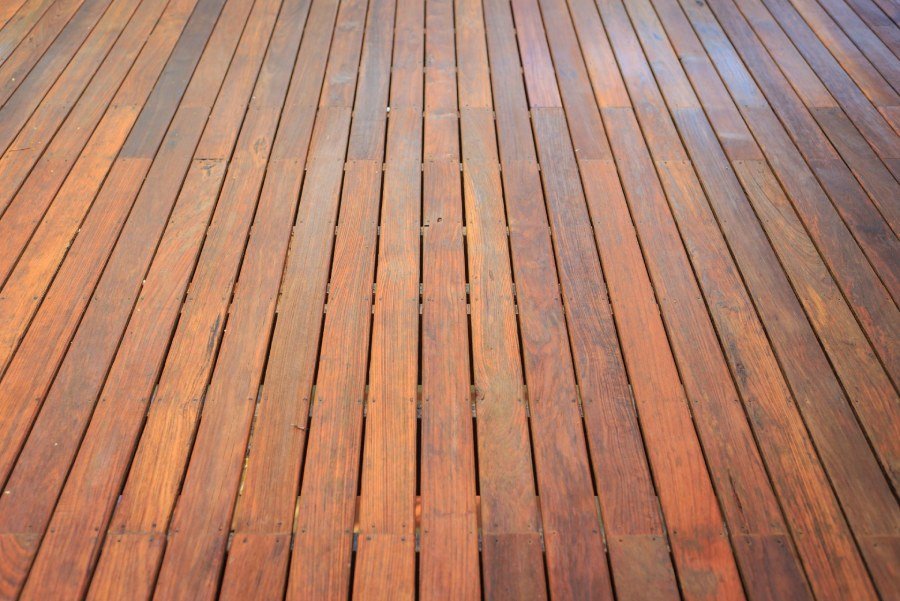
Estimated Cost Of Kwila Decking In Australia
Are you planning to revamp your outdoor space with a new deck and consider Kwila as your material of choice? You’re in good company! Kwila, also known as Merbau, is a popular hardwood decking option in Australia, renowned for its durability, stunning appearance, and resistance to termites and decay. But what about the costs? Let’s dive into the estimated cost of Kwila decking in Australia, compare it with other materials, and explore real-life examples to help you make an informed decision.
Price Range per Square Meter for Kwila Decking Materials
The cost of Kwila decking can vary based on factors such as the thickness of the boards, the quality of the timber, and where you purchase it from. On average, the price range per square meter for Kwila decking materials is approximately AUD $90 to $160. This pricing is for the material alone and does not include additional costs such as installation, which can vary depending on the complexity of your decking project and the rates charged by your contractor.
Comparison with Other Decking Material Costs
When considering Kwila decking, it’s helpful to compare its cost with other popular decking materials:
Composite Decking: Composite materials are a blend of wood fibers and plastic. They offer the look of wood without the maintenance. The cost of composite decking is roughly AUD $100 to $350 per square meter. While more expensive upfront, composite decking can be a cost-effective choice in the long run due to its longevity and low maintenance requirements.
Pine Decking: Treated pine is a cost-effective and widely available decking option. The cost of pine decking ranges from AUD $50 to $100 per square meter, making it a budget-friendly alternative. However, pine does not offer the same durability and resistance to pests and decay as Kwila.
Case Studies or Examples of Real Kwila Decking Projects and Their Costs
To give you a clearer picture of what to expect in terms of costs, let’s look at a couple of real-life examples of Kwila decking projects:
Medium-Sized Residential Deck: For a medium-sized deck of approximately 20 square meters, the material cost for Kwila decking would be around AUD $1,800 to $3,200. Including installation, the total project cost might range from AUD $3,600 to $6,400, depending on the design complexity and labor rates.
Large Residential Deck with Custom Features: A larger deck of around 40 square meters with custom features such as seating or a pergola could see material costs for Kwila decking in the range of AUD $3,600 to $6,400. With installation and additional features, the total project cost could range from AUD $7,200 to $12,800 or more.
It’s clear that Kwila decking presents a valuable option for Australian homeowners looking to upgrade their outdoor living spaces. While it may not be the cheapest option available, its durability, aesthetic appeal, and resistance to Australian conditions make it a worthwhile investment. Whether you’re planning a simple backyard deck or a sophisticated outdoor entertainment area, considering the cost of Kwila decking is a great starting point for creating a stunning and durable outdoor space that you and your family will enjoy for years to come.

Installation Costs And Considerations
In the world of home improvements and renovations, one critical area that often requires attention is understanding the various factors that contribute to installation costs and considerations. Whether you’re planning a DIY project or contemplating hiring professionals, grasping the nuances of installation can significantly impact both the outcome and your wallet. This guide delves into the essential elements of installation costs, offering insights into DIY versus professional installation, additional costs to be aware of, and invaluable tips for minimizing expenses without cutting corners on quality.
DIY vs. Professional Installation: Weighing Your Options
Embarking on a DIY project can be an exhilarating challenge that offers the satisfaction of personal achievement and potentially lowers costs. However, it’s vital to realistically assess your skills, the complexity of the project, and the time you can dedicate. DIY projects are best suited for those with a good understanding of the task at hand and access to the necessary tools. The pros of taking this route include cost savings on labor and the flexibility to work at your own pace. On the flip side, the cons involve the risk of potential mistakes, which could lead to higher costs if professional intervention is required later.
Opting for professional installation brings the assurance of expertise and experience. Professionals can navigate unexpected issues, ensure compliance with regulations, and provide warranties for their work. The downside includes higher upfront costs and the need to schedule around the contractor’s timeline. When considering professionals, obtaining multiple quotes and checking references can lead to significant savings and peace of mind.
Unpacking Additional Costs
Beyond the basic installation expenses, several additional costs can affect the overall budget. These include:
Fasteners and Finishes: Depending on the project, the type of fasteners (nails, screws, bolts) and finishes (paint, stain, sealant) can vary widely in cost. Opting for high-quality materials can extend the longevity of your project but at a higher initial investment.
Understructure Materials: For projects like decking or flooring, the materials used for the understructure are critical for durability and safety. While it’s tempting to skimp on these unseen elements, they form the foundation of your project’s integrity.
Tips for Reducing Overall Costs
Reducing your installation costs without compromising on quality requires a strategic approach. Here are some tips:
Plan Thoroughly: Detailed planning can prevent costly mistakes and unnecessary purchases. Take the time to research and design your project carefully.
Comparison Shop: Prices for materials and labor can vary significantly. Shop around and consider alternative sources for materials, such as online marketplaces or salvage yards.
Leverage Sales and Discounts: Timing your project to coincide with sales on materials can lead to substantial savings. Keep an eye out for discounts at local hardware stores and online.
Reuse and Recycle: Whenever possible, repurpose materials from other projects or source reclaimed materials. This approach can offer both cost savings and a unique aesthetic.
DIY What You Can: Even if you opt for professional installation, consider handling some aspects of the project yourself, such as demolition or finishing work, to reduce labor costs.
By understanding the full spectrum of installation costs and considerations, you can make informed decisions that balance budget and quality. Whether you choose the DIY route or hire professionals, careful planning and a willingness to invest effort into the project management process can yield satisfying results that enhance your home’s value and appeal.

Maintenance And Longevity
In the world of outdoor decking, Kwila (also known as Merbau) stands out for its durability, aesthetic appeal, and resilience to weather conditions. However, like any investment in your home, understanding and adhering to maintenance requirements is key to ensuring your Kwila decking not only lasts but also retains its beauty over time. In this section, we delve into the basic maintenance requirements for Kwila decking, its expected lifespan with proper care, and the long-term cost benefits of investing in this sought-after decking material.
Basic Maintenance Requirements for Kwila Decking
Kwila decking is renowned for its minimal maintenance needs, making it an excellent choice for homeowners seeking both luxury and convenience. To maintain the rich color and texture of Kwila wood, a few simple steps should be followed:
1. Regular Cleaning: Sweep your deck regularly to remove debris and dirt. For a deeper clean, a mild soap solution and a soft bristle brush can help remove stubborn grime without damaging the wood.
2. Immediate Spill Cleanup: Kwila’s dense grain makes it less prone to staining, but it’s still advisable to clean spills as soon as they occur to prevent any potential discoloration.
3. Annual Sealing: While Kwila’s natural oils provide inherent weather resistance, applying a high-quality decking oil or sealant annually can help preserve its color and protect against moisture and UV rays.
Adhering to these basic maintenance steps can significantly extend the life and beauty of your Kwila decking, making it a long-lasting addition to your outdoor living space.
Expected Lifespan of Kwila Decks with Proper Care
With proper maintenance, Kwila decking is an investment that pays off in the long term. Typically, a well-cared-for Kwila deck can last anywhere from 25 to 40 years or more. This impressive lifespan is largely due to Kwila’s natural resistance to decay, insects, and fungal growth. By following the maintenance guidelines outlined above, you can help ensure your deck remains a stunning and functional part of your home for decades.
Long-Term Cost Benefits of Investing in Kwila Decking
Choosing Kwila decking is not just about the immediate aesthetic or functional benefits; it’s also a wise financial decision in the long run. While the initial cost may be higher than some other decking materials, the longevity and durability of Kwila mean fewer repairs and replacements over the years. Additionally, its low maintenance requirements save you both time and money in upkeep. Finally, the timeless appeal and durability of Kwila decking can enhance the overall value of your property, making it a smart investment for homeowners looking to improve their outdoor living space with a material that stands the test of time.
In conclusion, Kwila decking represents a harmonious blend of beauty, durability, and practicality. By following straightforward maintenance practices, you can enjoy the numerous benefits of your Kwila deck for years to come, making it a worthwhile investment for any homeowner. Whether you’re lounging on a summer day or hosting a backyard barbecue, a Kwila deck provides the perfect setting for making lasting memories.

Making Your Decision
Deciding on the perfect decking for your outdoor space can be a significant commitment, not just financially but in terms of the time and effort required for maintenance. When it comes to selecting Kwila decking, an attractive and durable option popular in Australia, weighing the upfront costs against the long-term value is crucial. Additionally, knowing the right questions to ask suppliers or contractors and tips for finding the best deals can significantly enhance your decision-making process. Here’s a comprehensive guide to navigating these aspects smoothly and making an informed choice that suits your preferences and budget.
Weighing Upfront Costs Against Long-Term Value
When considering the installation of Kwila decking, it’s essential to look beyond the initial price tag. Consider durability, maintenance requirements, and lifespan. Kwila, known for its resistance to decay and insects, presents an excellent long-term investment. Calculate the potential savings from reduced maintenance and replacement costs over the years. Also, think about the aesthetic value and how it complements your home, potentially increasing your property’s market value.
Key Questions to Ask Suppliers or Contractors
Before making a purchase, gathering as much information as possible is key. Here are some critical questions to ask:
Origin of the Kwila: Is it sustainably sourced? Kwila’s durability and beauty are undisputed, but ensuring it comes from a responsible supplier is crucial for environmental sustainability.
Treatment and Maintenance: What treatments has the decking undergone? How does it affect maintenance frequency and costs?
Warranty and Support: What warranties are offered, and what do they cover? Understanding the level of post-purchase support can give you peace of mind.
Installation Costs and Services: Ask about the full scope of installation costs and services. It’s important to know if there are additional costs for preparation or finishing work.
Tips for Finding the Best Deals on Kwila Decking in Australia
Finding the best deals requires a bit of research and timing. Here are some tips to help you secure the best price without compromising on quality:
Compare Prices: Get quotes from multiple suppliers and contractors. Prices can vary significantly, so shopping around is beneficial.
Look for Sales and Discounts: End-of-season sales, holiday discounts, and bulk purchase deals can lead to significant savings.
Check Online Marketplaces: Sometimes, you can find better deals or second-hand options in excellent condition on online marketplaces.
Ask for Referrals: Word of mouth is powerful. Friends, family, or online communities may know of great deals or reputable suppliers.
Negotiate: Don’t be afraid to negotiate the price, especially if you’re making a large purchase or combining it with other services.
By carefully considering the long-term value, asking the right questions, and using smart shopping strategies, you can make an informed decision on Kwila decking. This approach not only ensures that you get the best value for your investment but also contributes to a sustainable and environmentally responsible choice. Remember, the right decking can transform your outdoor space, providing years of enjoyment and aesthetic appeal.

FAQs: About The Cost Of Kwila Decking Australia
Kwila decking is made from a hardwood known for its durability, natural beauty, and resistance to decay and insects. Its popularity in Australia stems from its ability to withstand the harsh Australian climate, providing a long-lasting and aesthetically pleasing outdoor decking option.
The cost of Kwila decking in Australia typically ranges from $250 to $350 per square meter. This estimate includes both materials and installation, but prices can vary based on specific project details and location.
Several factors can influence the cost, including the size and thickness of the decking boards, the complexity of the deck design, geographic location, and current market demand for Kwila wood.
Yes, Kwila wood comes from tropical forests, and there are concerns about sustainability and deforestation. It’s important to purchase Kwila from suppliers who source their wood responsibly and adhere to legal logging practices.
Kwila decking is often more expensive than softwood options like pine but can be comparable to or slightly more expensive than other hardwoods and composite materials, depending on the quality and specifications.
While DIY installation is possible, hiring a professional is recommended to ensure the decking is installed correctly and lasts its intended lifespan. Professional installation can also affect the overall cost but usually results in a higher quality finish.
Kwila decking requires regular cleaning and occasional resealing or oiling to maintain its color and protect against the elements. Compared to other decking materials, its maintenance requirements are moderate.
With proper maintenance, Kwila decking can last up to 30 years or more. Its natural resistance to decay, insects, and harsh weather conditions makes it a durable option for outdoor decking.
Like many decking materials, Kwila can become slippery when wet. Applying a non-slip finish or choosing boards with a textured surface can help improve safety.
Look for Kwila decking that comes with certification from recognized environmental organizations, such as the Forest Stewardship Council (FSC). This certification ensures that the wood has been sourced in an environmentally friendly and socially responsible manner.
Conclusion
In wrapping up our thorough analysis of Kwila decking, it’s crucial to underscore the significant durability, aesthetic allure, and practical benefits it brings to the table. Celebrated for its resilience against decay, pests, and weather, alongside its rich, inviting tones, Kwila (or Merbau) stands out as an exemplary choice for those in pursuit of a decking solution that marries longevity with elegance. We’ve touched upon the importance of sourcing sustainably, emphasizing that choosing responsibly harvested Kwila not only enhances your outdoor space but also supports environmental stewardship. Despite its initial cost being on the higher side, the long-term savings in maintenance, coupled with its unparalleled durability and aesthetic appeal, position Kwila decking as a wise investment. This singular material transforms outdoor areas into captivating retreats while promising an enduring increase in property value. As you contemplate your decking options, let the lasting value and sheer beauty of Kwila guide your decision, ensuring your outdoor space remains both functional and magnificent for years to come.
Menu
- About
- Blog
- Contact Us
- Deck Builders Blue Mountains
- Patio Builders Blue Mountains
- Patio Builders Penrith
- Pergola Builders Blue Mountains
- Pergola Builders Penrith
- Privacy Policy
- Sitemap
- Terms And Conditions
About the Author:
Mike Veail is a recognized digital marketing expert with over 6 years of experience in helping tradespeople and small businesses thrive online. A former quantity surveyor, Mike combines deep industry knowledge with hands-on expertise in SEO and Google Ads. His marketing strategies are tailored to the specific needs of the trades sector, helping businesses increase visibility and generate more leads through proven, ethical methods.
Mike has successfully partnered with numerous companies, establishing a track record of delivering measurable results. His work has been featured across various platforms that showcase his expertise in lead generation and online marketing for the trades sector.
Learn more about Mike's experience and services at https://theleadguy.online or follow him on social media:

